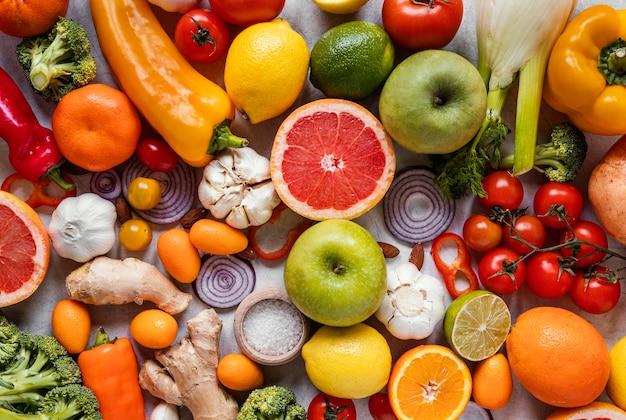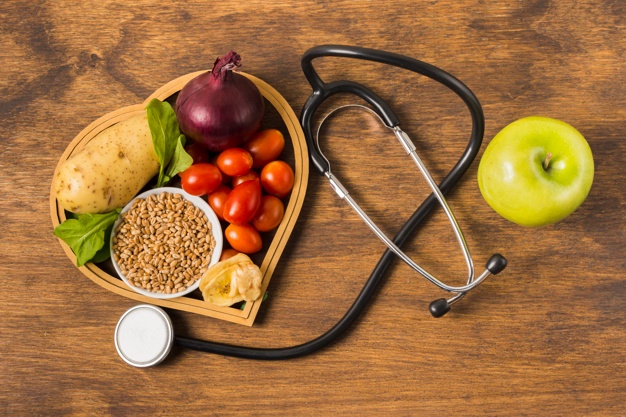You probably know that to have a healthy lifestyle, you must have a healthy diet as well. And highly processed foods are known as the main enemy of a healthy lifestyle. But many people don’t know what exactly constitutes a highly processed meal and why its excessive consumption creates health problems.
This article will help you with that: we will describe the distinctions between healthy foods and highly processed foods, and the reasons why highly processed foods should be consumed only on occasion.
Healthy food: definition and examples
In general, unprocessed or minimally processed foods include fresh vegetables, fruits, pasteurized milk, chicken, fish, beans, and eggs. This is due to the fact that many items are unprocessed or very lightly processed before being purchased or harvested.
These foods are commonly referred to as “whole foods” because they are in their natural, whole state or very close to it.
Here are some examples of foods that are good for frequent consumption: grains, such as brown rice, quinoa; buckwheat legumes such as beans and lentils; vegetables and fruits.
Potatoes, cassava, and sweet potatoes (and other starchy root vegetables), fresh or pasteurized milk and plain yogurt. Proteins, such as meat, poultry, eggs, and fish; 100% natural fruit juice; spices and herbs; nuts and seeds; tea and coffee.

Furthermore, some oils, such as olive and avocado oils, are made from whole foods and are considered healthful. Sometimes, the term “healthy” can be troublesome since it implies that processed foods are always “villains”. But there are “levels” of processed foods and minimally processed foods can be nutritious.
Using the term “nutrient dense” is considered better than the term “healthy”. This term is more precise, since it refers to foods that have a high nutritional density per gram. In general, minimally processed and unprocessed foods are nutrient-dense in comparison to ultra-processed meals.
A homemade meal with veggies and brown rice, for example, is likely to be considerably healthier than a highly processed meal. This does not, however, imply that you must quit eating all processed and highly processed meals. It simply means that entire, nutrient-dense meals should make up the majority of your diet.
Highly processed foods: definition and examples

Almost all foods have been processed in some way. This does not imply that they are unhealthy. So, before we go into what defines a food highly processed, it’s crucial to note that some foods aren’t necessarily “unhealthy” just because they’ve been processed.
Researchers use NOVA classification, a food classification system developed by academics at the University of Sao Paulo in Brazil, to separate groups of foods according to their extent of processing. Take a look at those groups:
- NOVA – Group 1
Foods that have been minimally processed and foods that have not been processed at all. This includes fruits, vegetables, grains, legumes, and nuts. Roasting, boiling, or pasteurization may have been used to extend the shelf life of certain foods or make them safe to eat.
- NOVA – Group 2
Culinary ingredients that have been processed directly from group 1 foods or from nature. Olive oil, maple syrup, and salt are examples of such foods. The majority of group 2 foods are utilized in the preparation and cooking of group 1 cuisine.
- NOVA – Group 3
Processed foods, which include those manufactured by adding salt, sugar, or other elements from group 2 foods to group 1 foods. Fresh bread, fruits in syrup and cheese are just a few examples.
- NOVA – Group 4
These foods are often heavy in sugars, refined grains, fats, preservatives, and salt, and are designed to be handy, hyper-palatable, and low-cost. Foods that have been ultra-processed, or highly processed, usually contain ingredients that you wouldn’t use in your own kitchen, such as:
- Proteins that have been hydrolyzed
- Starches that have been modified
- Oils that have been hydrogenated
- Colorants and flavorings
- Maize syrup with a high fructose content
- Sweeteners synthesized
- Thickening agents
These rules for classifying foods aren’t perfect or 100 percent precise, and experts recognize that there’s a lot of variation in how foods are classified as “highly processed” in research studies.
Many studies, for example, consider breakfast cereals to be highly processed. Healthcare specialists, on the other hand, do not consider some cereals to be highly processed if they have no added sugar and have been processed minimally.
This classification system, however, is only intended to give a broad notion of what makes a meal highly processed based on its manufacture and ingredients.
[1]Healthy Food vs. Highly Processed Food: What to Know. (2021). Healthline. https://www.healthline.com/nutrition/junk-food-vs-healthy-food#what-are-healthy-foods
You don’t have to eliminate processed food from your life for good. You just have to prioritize the consumption of non-processed (or minimally processed) food. Plus, be careful with processed food from the NOVA Group 4: most highly processed foods are not healthy and this is the main category to be avoided.
Did you like this article? Share it with your friends and follow us on social media!
Plus, don’t forget to visit our website.
References
